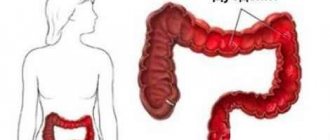Have you been struggling with GASTRITIS and ULCERS for many years without success?
“You will be amazed at how easy it is to cure gastritis and ulcers just by taking it every day...
Read more "
Gastritis is a gastrointestinal pathology in which inflammatory processes develop on the gastric mucosa. If the patient ignores the symptoms that appear and does not promptly contact a medical institution for help, he will begin to experience erosive changes on the walls of the organ. Over time, ulcers form at the site of the lesions, which, as everyone knows, are harbingers of malignant neoplasms.
Modern medicine has not yet managed to develop a technique that would completely cure gastritis. Patients undergoing drug therapy for pathology can only transfer it into a state of stable remission and subsequently undergo prophylaxis to prevent exacerbations.
Use of antibiotics for stomach ulcers
To properly select treatment for gastric ulcers with antibacterial drugs, the patient's gastrointestinal tract should be examined.
Endoscopic examination, x-rays, ultrasound, biopsy, blood and stool tests help determine the optimal course of treatment.
Diagnostics makes it possible to accurately determine the stage of the patient’s ulcer, the type and form of damage to the gastric mucosa.
The collected information will allow us to determine what was the root cause of the disorder in the functioning of the digestive system.
The most popular reason for the formation of gastric and duodenal ulcers is the penetration of the harmful microorganism Helicobacter pylori into the gastrointestinal tract.
In order to eliminate the symptoms of the disease caused by this bacterium, special antibiotics should be used.
What causes stomach ulcers?
As experts note, the reasons for the formation of peptic ulcers are varied. As a rule, there are 2 main factors that have a direct impact on the mucous membrane of the organ. The most common cause of stomach ulcers is increased acidity. And this condition is caused by an elevated level of hydrochloric acid in the body. Consequently, the harmful effects of hydrochloric acid provoke the formation of stomach ulcers.
The second factor influencing the development of ulcers is the bacterium Helicobacter pylori. But experts note that with proper functioning of the gastrointestinal tract, this bacterium does not have a destructive effect on the mucous membranes of the organ. Consequently, infection of the body by a bacterium can be considered a conditionally pathogenic factor.
But at the slightest malfunction of the gastrointestinal tract, favorable conditions appear for the direct proliferation of microorganisms. As a result of this, Helicobacter begins to have a detrimental effect on the cells of the mucosa, which leads to the direct destruction of the organ’s defense mechanism. What is typical is that it is possible to become infected with this microorganism both through household and contact means. Therefore, to provoke the development of bacteria and their harmful effects, a combination of negative factors is required. Indirect factors that can contribute to the development of ulcers include:
- Psycho-emotional stress. It has been proven that severe stress contributes to excessive secretion of gastric juice.
- Hereditary predisposition. Quite often, people with gastritis and ulcers have relatives with increased acidity levels.
- Consumption of stimulants. Tobacco smoking, excessive consumption of coffee and alcohol provokes an increase in acidity.
- Wrong diet.
- Eating disorder. Consumption of food on the go and long intervals between food consumption provoke a disorder in the functionality of the gastrointestinal tract.
- Prolonged stomach ailments.
- Excessive use of medications.
Prescribing antibiotics for illness
Indications for the use of such drugs during stomach ulcers and gastritis will be the appropriate diagnosis and the presence of an infection inside the body, which is confirmed by an appropriate study.
When a stomach ulcer is not bacterial in nature, antibiotics are not prescribed.
Such a disease in its pure form is rarely observed. Mostly inflammation spreads deep into the body, covering the nearby parts of the intestine.
Antibacterial agents for stomach and duodenal ulcers are prescribed in the same way as for a disease that has not spread to other organs.
The same antibiotics and therapeutic courses using them are prescribed for gastritis, since they are effective in combating the bacteria found in stomach ulcers.
Helicobacter pylori makes the gastrointestinal mucosa more susceptible to the influence of various irritants, for example, gastric juice.
Popular antibiotics for illness
The traditional approach to the treatment of gastric and duodenal ulcers involves the use of broad-spectrum antibacterial agents used to treat both gastrointestinal diseases and bacterial pathological processes of the respiratory and genitourinary system, skin infections, inflammatory diseases of the brain, etc.
Antibiotics for gastritis and stomach ulcers today involve the use of the following medications:
- semisynthetic penicillins (Amoxicillin);
- macrolides (Clarithromycin, in certain cases Erythromycin is used).
There are also common courses of treatment for stomach ulcers and gastritis, when antimicrobial agents (broad-acting antibiotic) and Metronidazole, which has an antiprotozoal effect, are used.
Occasionally, a course of treatment is used, where one of the drugs is Tetracycline.
This practice is observed in situations where other therapy has failed or when the patient’s body is sensitive to penicillin antibiotics.
The eradication regimen for the treatment of stomach diseases is a combination of various mutually reinforcing drugs.
Basic antibacterial agents
Of course, there are many recipes from the arsenal of traditional medicine that fight Helicobacter pylori. But you must remember that they can only be used as an addition to the main course, but not in any way try to cure an ulcer with plantain and sea buckthorn oil.
A person who has cured gastrointestinal pathology using the traditional method can take herbal infusions for prevention. However, it is advisable to consult a doctor about them. And, of course, you should adhere to proper nutrition.
In medical practice, several groups of drugs are traditionally used for bacterial gastritis:
- Clarithromycin (Binoclar and Klacid are its analogues);
- Omeprazole (Omez, Promez and others);
- Amoxicillin (Amoxil, Amoxicar).
To achieve a quick cure, the drugs are combined with Metronidazole. That is, they take two antibacterial agents at once for gastritis caused by Helicobacter pylori. This frightens many people who do not understand why such a powerful blow to their body. The fact is that this bacterium is highly resistant to antibiotics, so it is necessary to take drugs from different groups to achieve the best result.
There are several treatment regimens for Helicobacter pylori infection. We strongly recommend that you entrust the selection of drug therapy to a doctor and not self-medicate.
There is one two-stage treatment regimen for duodenal and gastric ulcers, which is aimed at eradicating Helicobacter and relieving the symptoms of the disease:
- To begin with, the doctor prescribes two antibiotics, as well as a proton pump inhibitor. The combination of Clarithromycin and Metronidazole showed the greatest effectiveness in treating infection. The dosage is prescribed by the doctor, so we advise you not to choose your own therapy, but to see a specialist. The average dosage is 500 mg. for an adult and 250 mg. - for a child. Typically, antibiotics need to be taken three times a day.
- After repeating the breath test - about a month later - Helicobacter pylori almost completely disappears from the patient’s body. To get rid of the remaining pathogenic microbes, complex antibacterial therapy is prescribed - Metronidazole in combination with Tetracycline. Also, the doctor does not forget about Ranitidine (a histamine receptor blocker), a proton pump inhibitor.
Before prescribing a specific drug, the doctor finds out the sensitivity of the patient’s body to antibiotics. This will help you choose medications that will lead to the eradication of the pathogenic bacteria.
Sometimes it happens that Helicobacter is too resistant. Here the treatment includes taking two antibiotics and an antiseptic. In this case, the accuracy of the dosage plays an important role, which depends on the patient’s age, weight and the presence of other diseases of the internal organs.
There is also quadruple therapy, which is used to treat gastritis if the previous regimen did not show adequate effectiveness upon re-examination. It is based on taking two antibiotics, proton pump inhibitors and a bismuth drug.
In addition to antibacterial and other drugs prescribed for ulcers and gastritis, the doctor selects a number of additional medications that speed up the patient’s recovery: antiemetics, antispasmodics and painkillers.
Traditionally, for stomach ulcers, broad-spectrum antibiotics are prescribed to destroy all strains of pathogenic bacteria.
Typically, gastroenterologists use two types of antibiotics for stomach ulcers: penicillins and macrolides.
Some treatment courses involve taking broad-spectrum antibiotics and Metronidazole, an antibacterial drug with antiprotozoal properties. Sometimes doctors prescribe tetracycline. Usually, this antibiotic is used for stomach ulcers when other medications do not have the desired effect or when there is an individual intolerance to antibacterial agents belonging to the penicillin group.
An eradication treatment regimen combines several drugs that enhance each other's effects.
A broad-spectrum antibacterial agent belonging to the penicillin group, which emerges victorious in the fight against Helicobacter pylori. You can purchase the medicine in several forms: tablets, granules and capsules. A suspension is prepared from the granules. For stomach ulcers, take pills. They destroy the structure of the bacterial cell, causing the death of the pathogen.
The active ingredient Amoxicillin is quickly absorbed, providing effective and rapid treatment of pathology. Food entering the stomach does not affect the absorption of the drug and its effectiveness; it is not destroyed under the influence of the acidic gastric environment. The only drawback is the possibility of developing various side effects: runny nose, rash, joint pain, and sometimes fainting.
A gastroenterologist may prescribe Amoxicillin and Metronidazole together. The simultaneous use of these antibiotics is contraindicated for nervous disorders, disruption of hematopoietic processes, the body's immunity to Nitromidazole derivatives, and when taking bacteriostatic antibiotics for stomach ulcers. The combined use of Amoxicillin and antimicrobial medications enhances the therapeutic effect.
A broad-spectrum antibacterial drug belonging to the macrolide group. Characterized by a minimal number of negative manifestations. Usually the side effect is observed in only 10% of patients. It goes on sale in tablets.
The active substance blocks protein synthesis in the bacterial cell, which causes its death, since without protein it is deprived of building material.
Food does not affect the effect of the drug. Partially decomposes in an acidic environment. Therefore, this antibiotic is mainly recommended for stomach ulcers with normal acidity.
The effect of Clarithromycin is enhanced when taken together with Omeprazole. You cannot combine it with Warfarin, Simvastatin, Lovastatin and medications used in the treatment of diabetes.
Broad-spectrum antibacterial agent with antiprotozoal effect. Belongs to the nitroimidazole group. Produced in tablet form. Quickly absorbed in the digestive system. Excreted naturally.
Metronidazole should not be taken if you are hypersensitive to its components, taking Disulfiram and Busulfan, or taking medications containing alcohol and lithium. May cause rash, indigestion, migraines, seizures, confusion. In case of overdose, it provokes vomiting and disorientation.
All antibiotics are stored at a temperature of 18-20 degrees, out of reach of moisture and sunlight.
stomach ulcer treatment
Based on the diagnostic results, the attending physician selects antibiotics for stomach ulcers that can completely destroy the causative agent of the disease. When choosing a medicine and its dosage, he takes into account the stage and form of the disease, the patient’s body weight and age, the presence of other diseases, and general health.
At the same time, a first type antibiotic (Amoxicillin, Metronidazole, Clarithromycin, Ranitidine) and one auxiliary drug (usually a proton pump inhibitor) are prescribed to eliminate the unpleasant symptoms accompanying a stomach ulcer.
If the desired result cannot be obtained, then H2-histamine receptor blockers are used to enhance the effect of the antibacterial agent. If necessary, the doctor will prescribe anesthetics.
Click here - all materials about Gastritis
All portal materials about gastritis are at the link above
Duration of therapy is up to 14 days.
This scheme is resorted to if the first one does not provide the expected effect. In this case, an antibiotic of the first type (Tetracycline, Tinidazole) and two auxiliary drugs belonging to different subgroups and having a mutually reinforcing effect are used to speed up recovery and restoration of the body.
Second-line therapy relieves the symptoms of the disease, destroys pathogenic bacteria and normalizes the acid-base balance.
The duration of treatment is 10 days.
This method is resorted to if previous treatment regimens for stomach ulcers were ineffective and the disease relapsed. Two antibiotics belonging to different groups and two auxiliary drugs are prescribed simultaneously.
For stomach ulcers, Clarithromycin, Metronidazole, Tetracycline, Amoxicillin are combined in different combinations. Proton pump inhibitors are usually used as adjuvant drugs. If they do not work or are contraindicated for the patient, then they are replaced with H2-histamine receptor blockers.
Duration of therapy is up to 7 days.
A positive test for Helicobacter Pillory indicates that the stomach problems are quite serious. So much so that it will be necessary to treat the disease using a variety of different groups of drugs.
If we are talking about the destruction of Helicobacter, we talk about eradication therapy (eradication precisely means the complete destruction of this particular representative of pathogenic microorganisms living in the gastrointestinal tract).
There is a generally accepted scheme for the use of antibacterial drugs, which has proven its effectiveness. Due to the high resistance of H. Pillory, simultaneous use of two or three antibiotics is prescribed - this principle significantly increases the likelihood that the bacterium can be destroyed and addiction to a particular antibiotic will not occur.
What antibiotics should be taken for gastritis of the stomach is decided only by a gastroenterologist, and he has little choice:
- Metronidazole;
- Amoxicillin;
- Clarithromycin;
- Tetracycline.
If drugs from the group of antacids or proton pump inhibitors are taken for a sufficiently long time, throughout the entire course of treatment, then antibiotic therapy is prescribed for 7–10 days. No deviations from this period (neither less nor more) are acceptable - otherwise the effect of taking antibiotics will be zero.
And one more nuance - Metronidazole is a first-wave drug, that is, it is customary to always include it in the treatment regimen. Therefore, let's start with a description of it.
Antibiotics cause intestinal dysfunction
Metronidazole
This antimicrobial nitroimizadole antibiotic is effective against infections caused by anaerobic microbes.
The standard regimen for taking it is twice a day at a dosage of 500 mg for a week. For 10-day therapy, 5 doses/day of 200 mg are prescribed.
Clarithromycin
Amoxicillin
It is a semi-synthetic antimicrobial agent of the penicillin series. Has a wide spectrum of action. Effectively fights Helicobacter pylori.
Available in tablet form or capsules, as well as granules used to prepare a suspension. For the treatment of stomach and duodenal ulcers, the drug is prescribed in tablets.
Amoxicillin does not interfere with the process of bacterial reproduction, but destroys the structure of the pathogen cells, which leads to its death.
It is quickly absorbed when taken orally, resulting in local and systemic treatment of pathological processes.
Nutrition does not affect the absorption of the drug; the acidic environment of the stomach does not destroy the active substance.
In certain cases, Amoxicillin is prescribed in parallel with Metronidazole.
This treatment regimen is prohibited during diseases of the nervous system, impaired hematopoiesis, or a negative reaction of the body to the use of Nitroimidazole derivatives.
The use of the drug may be associated with such undesirable symptoms as an allergic reaction such as a rash, runny nose, conjunctivitis, and joint pain. If immunity is reduced, superinfections are likely to develop.
Long-term use of large dosages of the drug can cause ataxia, fainting and other symptoms. In kidney diseases, symptoms of nephrotoxicity occur.
The parallel use of Amoxicillin and antimicrobial agents enhances the therapeutic effect. Not used together with bacteriostatic antibiotics.
The drug must be stored at room temperature, in a place inaccessible to ultraviolet radiation and moisture.
Clarithromycin
A semi-synthetic agent with broad antibacterial action from the macrolide subgroup, which is considered the safest due to a small number of side effects.
Available in tablet form. It has a bactericidal effect against Helicobacter pylori, as it interferes with the biosynthesis of protein, which is the main building component of the cell membrane of the pathogen.
It is taken regardless of food intake, which has little effect on absorption.
Due to partial destruction in the acidic environment of the stomach, it is optimal to use for the treatment of ulcers that develop under natural acidity.
The antibiotic creates a sufficient concentration in the gastric mucosa, which is affected by the simultaneous use of the drug with Omeprazole.
In general, the drug is well accepted by patients and does not provoke negative symptoms. Less than 10% experience epigastric pain, nausea, dyspepsia, taste changes, and sleep disturbances.
When taking large dosages of the drug, negative symptoms in the gastrointestinal tract may be noted. It is recommended to rinse the stomach and treatment aimed at eliminating symptoms.
It is prohibited to use Clarithromycin in parallel with Lovastatin and Simvastatin. Warfarin causes severe bleeding.
Using the drug with antidiabetic medications often provokes hypoglycemia and a toxic reaction.
The product is stored at room temperature, away from ultraviolet radiation and moisture.
Choice of drug
Only the attending physician decides which antibiotic to prescribe. If he makes the wrong choice, he can later choose another drug for the patient.
But the patient must also do his part by providing the doctor with the following information:
- Have you had any allergic reactions to a particular drug in the past?
- After taking these pills, were there any significant side effects?
- Are there any other diseases that require you to take certain medications now? The doctor should know about the compatibility of these drugs and the prescribed treatment.
- If the disease is detected in a woman, she needs to be warned that she is pregnant or that she is currently breastfeeding a child.
If allergy symptoms appear after taking an antibiotic, you need to inform your doctor, he will select another drug. The doctor must tell you how often to take this medicine and in what dose, for how long, what to take with it, before or after meals, and so on. If he forgot to tell you something, you can read the instructions for the drug yourself or ask him again to get accurate recommendations.
Metronidazole
Broad-spectrum antibiotic with antibacterial activity and antiprotozoal characteristics. Its main component is the Imidazole derivative.
Available in tablets. Destroys the DNA of the molecular cells of the pathogen.
Characterized by rapid absorption in the gastrointestinal tract. It enters the body, where it reaches the required concentration. It is excreted in urine and feces.
The drug is not prescribed if you are sensitive to its components. The use of the product may be associated with unpleasant symptoms of digestive disorders, skin rashes, and allergies.
In some cases, there is headache, convulsions, confusion, and visual disturbances.
The use of large dosages of the drug can provoke a gag reflex and disorientation.
Metronidazole should not be combined with Disulfiram and Busulfan, or with alcohol-based medications.
The simultaneous use of the drug and lithium preparations causes intoxication.
The antibiotic is stored at room temperature in a place inaccessible to ultraviolet radiation and moisture.
Treatment regimens
When the patient has been diagnosed, the specialist prescribes a treatment regimen when conservative therapy is not able to give the desired result.
Basically, the patient is treated using various antibiotics and mutually reinforcing medications. The main objective of the course of treatment is the complete eradication of the pathogen inside the human body.
The doctor selects medications and their dose taking into account body weight, age, and personal characteristics of the patient’s body.
When is antibiotic use justified?
Many patients do not want to take antibiotics until the last minute, since such drugs differ in their chemical composition and can cause various complications.
The use of antibiotics always causes a powerful blow to the body and is often accompanied by a weakening of the immune system. But with a stomach ulcer, it is almost impossible to avoid their use.
Numerous clinical studies have revealed that in 85% of cases, the bacteria Helicobacter Pylori is the primary source of pathology.
Only complex therapy will help to overcome harmful microorganisms and prevent the development of side effects due to their activity.
Antibacterial drugs play a leading role in it. Such medications, both synthetic and natural, negatively affect the life of bacteria and destroy pathogenic microorganisms.
The treatment regimen is selected individually for each patient, taking into account contraindications and possible complications.
First line therapy
This method of treatment involves the simultaneous use of type 1 antibiotics and an auxiliary agent that helps alleviate the symptoms of gastrointestinal disease.
Clarithromycin, Amoxicillin, Ranitidine, Metronidazole are used. They are distinguished by effective interchangeability.
When taking Clarithromycin, the average dosage reaches 0.5 g, twice a day with meals.
Amoxicillin is taken 1 g, also twice a day. Take half an hour before meals or 2 hours after meals. Metronidazole is taken 0.25 g, 4 times a day after meals.
Along with the antibiotic, an adjuvant aimed at a specific action should be used. Most often they are proton pump inhibitors.
If there is no result, they are replaced with H2-histamine receptor blockers in order to enhance the antiseptic characteristics of the antibiotic. If necessary, anesthetics are prescribed.
The course of treatment lasts up to 2 weeks.
The most effective antibiotics
What antibiotics are the most effective for stomach ulcers? Currently, there is more than one effective treatment regimen for ulcerative pathology with the medications in question. In this case, the following types of medications are most often prescribed:
- Amoxicillin for ulcers;
- Amoxiclav;
- Clarithromycin;
- Tetracycline;
- Metronidazole.
Each of the above drugs has a specific principle of action and is prescribed taking into account the individual characteristics of the patient’s body. In view of this, it is worth taking a closer look at these dosage forms.
Amoxicillin
Helicobacter pylori is very sensitive to amoxicillin both in vivo and in vitro. Like other penicillins, amoxicillin acts by inhibiting the synthesis of the bacterial cell wall, which leads to the death of the pathogen. Amoxicillin has local intraluminal activity at the level of the gastric mucosa, as well as systemic activity. Unlike ampicillin, amoxicillin is actively released into the gastric juice from the bloodstream. Although amoxicillin is secreted into the gastric juice and mucosa during oral therapy, it achieves an H pylori eradication rate of less than 20%.
More than 2 g of amoxicillin per day does not increase the rate of H. pylori eradication when used as a single agent. However, when it is taken in combination with omeprazole, the concentration of amoxicillin in gastric juice and the effectiveness of its eradication are significantly increased. It is hypothesized that this enhanced eradication occurs due to omeprazole's reduction in gastric secretion, thereby increasing intragastric concentrations of amoxicillin. The advantage of using amoxicillin is that H pylori does not develop resistance to it.
Amoxicillin plus proton pump inhibitor
German studies report eradication rates of 80% to 85% with omeprazole (20 mg twice daily) and at least 1 g amoxicillin twice daily. Other studies have shown that the overall eradication rate using this dual therapy is approximately 60%. Today, amoxicillin in combination with a proton pump inhibitor is no longer considered an adequate treatment to eradicate the bacterium.
Amoxiclav
For ulcers and gastritis, Amoxiclav is often prescribed. This drug is a combination drug containing clavunolic acid and amoxicillin. Clavunolic acid has an inhibitory effect on bacteria. Due to this, pathological microflora becomes vulnerable to the effects of antibiotics.
Amoxiclav can be purchased in two forms: powder for preparing a suspension and tablets. The medicine is prescribed only by the attending physician.
Clarithromycin
The drug is from the same line to which Erythromycin belongs, successfully used by more than one generation of patients. In comparison, Clarithromycin is much more resistant to the effects of hydrochloric acid, is quickly absorbed and has a long period of effect on the human body. In the absence of contraindications for use, it is the main remedy from the pharmacological group of drugs for the treatment of stomach ulcers.
Clarithromycin plus proton pump inhibitor
A recent study found that two weeks of clarithromycin (500 mg three times daily) plus omeprazole (40 mg/day) followed by two additional weeks of omeprazole achieved an eradication rate of 83%. Reducing the clarithromycin dose to 250 mg twice daily in this regimen reduces the eradication rate to 62.1%. Studies that used a lower dose of omeprazole (usually less than 40 mg/day) also had lower eradication rates. Comparable results have been described with lansoprazole and clarithromycin. The eradication rate was 72.4% using lansoprazole (30 mg twice daily) and clarithromycin (400 mg twice daily) for 2 weeks.
Second line therapy
In the process of treating gastrointestinal diseases, a similar scheme is needed in a situation where the first one did not help the patient.
This scheme involves taking 1 type of antibiotics and 2 mutually reinforcing drugs in parallel for the fastest recovery of the patient.
During therapy, the dosage of antibiotics used during first-line treatment increases. Tetracycline 0.5 g is used, 4 times a day after meals. Tinidazole 0.5 g, twice a day after meals.
Prescribe 2 auxiliary means of different subgroups. They are aimed at strengthening the main medicine, as well as expanding the impact.
Helps eliminate symptoms of digestive diseases, eliminate harmful bacteria and normalize the level of acid-base balance.
Treatment continues for 10 days.
How to use
- Take the medicine only with clean water. You should not use juice or tea for this, especially milk. Because of milk, all your treatment may be useless, therefore, during treatment with antibiotics, it is better not to drink milk at all, or drink it 4 hours after taking the medicine.
- Pay attention to when exactly is the best time to take this medicine, before or after meals. This should be written in the instructions. Follow the recommendations strictly.
- During treatment with antibiotics, you should not exercise, and it is better to reduce physical activity.
- During this period you should not drink alcoholic beverages. Some drugs can interact with each other and should not be combined. The doctor should have warned you about this. For example, you should not take antacids and antibiotics at the same time, since the former interfere with the absorption of the latter.
If a patient has a stomach or duodenal ulcer due to the Helicobacter pylori bacterium, the doctor will probably prescribe a course of antibiotics. These medications will help control these microorganisms, which will promote recovery. You can get rid of the disease only if you eliminate the cause of its occurrence, as well as carry out the necessary course of treatment. Much depends on the patient himself, on whether he is ready to lead a healthy lifestyle, eat right, and take medications. Only then can stable remission and improved well-being be achieved.
Combination therapy
This method of treatment is used in a situation where the previous ones did not give the proper result. It is mainly prescribed during exacerbation of gastrointestinal diseases.
Involves the simultaneous use of 2 different antibiotics and 2 mutually reinforcing agents. Combine Amoxicillin, Clarithromycin, Tetracycline and Metronidazole.
Proton pump inhibitors are mainly used in this therapy. If they did not help the patient due to his personal sensitivity to the drug, then H2-histamine receptor blockers are prescribed.
The second drug is a drug from another subgroup that complements the treatment with the missing effect.
The course of treatment lasts up to 1 week.
Contraindications for treating ulcers with antibiotics
The list of contraindications to the use of antibiotics includes:
- Personal immunity to the components of the product.
- Allergies.
- Pregnancy and breastfeeding.
- Kidney and liver failure.
Moreover, all antibiotics have special contraindications that are unique to this drug:
- Amoxicillin – lymphocytic leukemia, pathological processes of the digestive system.
- Clariromycin – porphyria.
- Metronidazole is a sensitization of the body that provokes asthma.
If the expected result is absent or the condition sharply worsens after treatment with antibiotics, it is necessary to stop taking all medications and consult a specialist to prescribe a new treatment regimen.
For gastric ulcers, treatment with antibiotics should be even more careful and attentive than for gastritis.
In the process of treating stomach and duodenal ulcers, different medications are needed.
During exacerbation of pathological processes in the digestive organs, effective therapy should be carried out with the mandatory use of antibiotics.
In order to achieve a speedy recovery, it is necessary to choose the optimal therapeutic regimen.
Side effects of antibacterial therapy for gastritis
Such serious drugs are prescribed for helicobacteriosis. To identify it, several examinations are performed. Usually the gastroenterologist sends the patient for FGDS. During this procedure, the specialist will notice not only swelling of the mucous membrane, but will also be able to take a biopsy to detect pathogenic bacteria.
However, this method of diagnosing Helicobacter pylori is not the most effective. Therefore, modern doctors suggest that patients undergo another breathing test. Its advantage is that results can be obtained within 24 hours (unlike a biopsy).
It is unacceptable to take any medications without a full diagnosis and doctor’s prescription. Self-medication is fraught with aggravation of the disease, as well as suppression of the immune system and beneficial intestinal microflora.
Each doctor has his own treatment regimen for Helicobacter pylori infection with duodenal ulcer, stomach ulcer or gastritis. The doctor chooses which drug is most effective in a particular case. There are about 500 types of antibacterial medications used to treat pathologies of the gastrointestinal tract. Among them, the most effective are:
- Clarithromycin is an antibacterial agent that is quickly absorbed and has a long-lasting effect. Unlike its predecessor Erythromycin, it is more resistant to aggressive hydrochloric acid.
- Amoxicillin belongs to the penicillin class. Since it has a long period of elimination from the body, it must be taken no more than twice a day.
- Metronidazole in combination with amoxicillin shows its effectiveness in the treatment of Helicobacter for gastric ulcers. The action is aimed at destroying the DNA of enemy microorganisms.
- Tetracycline has a detrimental effect on the protein synthesis of Helicobacter pylori cells, which leads to the death of the bacterium.
You need to understand that, despite the effectiveness of these four drugs, the pathology caused by Helicobacter can be cured only if you follow the antibacterial therapy prescribed by the doctor. Uncontrolled use of medications can only increase bacterial resistance to antibiotics, which will complicate treatment in the future.
The disadvantages of treating gastritis and stomach ulcers with antibiotics include the high likelihood of developing an allergic reaction. You should also not forget about the wide list of side effects. While taking such potent medications, the following are possible:
- problems with stool (after antibiotics they can remain for several months);
- pain localized in the abdomen.
However, these are just “flowers”. After all, taking some antibacterial drugs against gastritis causes:
- dizziness, hallucinations and convulsions;
- disturbances in the functioning of the excretory system (up to temporary urinary incontinence);
- problems related to kidney function.
These side effects are explained by the fact that the components of antibiotics affect not only enemy bacteria, but also those that make up the beneficial microflora in the intestines.
Since antibacterial drugs for gastritis and ulcers have a strong effect on the body, it is not surprising that there are many categories of people for whom such treatment is contraindicated. These include:
- women during pregnancy and lactation period;
- people with kidney failure.
Individual intolerance is also considered one of the main contraindications.
Do not forget about the individual properties of certain drugs. For example, Metronidazole is prohibited for people with asthma, and people with mononucleosis cannot fight Helicobacter with Amoxicillin.
Failure to consult a specialist in a timely manner and take self-selected medications can lead to serious problems:
- internal bleeding of the digestive organs;
- perforation of the ulcer, which leads to peritonitis;
- transformation of an ulcer into a malignant one.
In these and other severe cases, there is no point in the patient using drugs aimed at treating the ulcer. Urgent surgical intervention is required. Otherwise, the consequences may be unpredictable.
Now you know in what cases antibiotics are necessary, and why other broad-spectrum medications are also used to successfully treat gastritis and gastrointestinal pathologies. Of course, we should not forget that for successful treatment you need to monitor your diet. You may need the help of a surgeon (in especially severe cases).
Antibiotics for the treatment of gastritis and stomach ulcers, if the regimen is incorrectly prescribed, as well as if the course of administration is not followed, can, due to the occurrence of side effects, significantly reduce the quality of antibiotic therapy.
Tetracycline has the greatest number of undesirable manifestations. Dyspeptic reactions are characteristic of all drugs used to treat gastritis (nausea, diarrhea, heartburn, epigastric discomfort).
Depression occurs quite rarely; cases of gout and feelings of general weakness are possible, which usually disappear immediately after stopping taking drugs of this group.
Treatment of gastritis with antibiotics should be accompanied by the prescription of bifidobacteria in order to eliminate their deficiency. For the same reason, it is recommended to add fermented milk products to the menu.
If there is a history of peptic ulcer, antibiotic therapy should be used with extreme caution, with preliminary clarification of the tolerability of a particular drug.
Regardless of the purpose and for what diseases antibiotics are prescribed, they simultaneously suppress the activity of “good” bacteria while affecting pathogenic microorganisms. Usually these are bifidobacteria and lactobacilli that live in the digestive tract. This phenomenon is called dysbiosis, and in many cases, an imbalance in the intestinal microflora is fraught with very unpleasant symptoms.
Therefore, antibiotics for ulcers and gastritis are prescribed with careful monitoring of the state of the intestinal microflora. When signs of dysbiosis are detected, and often simply for preventive purposes, along with antibiotics, medications are prescribed whose functions include restoring the normal state of the microflora and replenishing the deficiency with certain microorganisms.
Restoration of intestinal microflora
Some of the most commonly prescribed probiotics include:
- Linux;
- Lactobacterin;
- Lacidophilus;
- Bifidumbacterin.
Important! Self-medication with antibiotics for gastritis is not only contraindicated and pointless - it is extremely harmful, since with any mistake there will be no improvement, and the chance of Helicobacter Pillory becoming addicted to a particular drug will increase. This is very bad, because the choice of drugs is very limited, and you risk being left alone with this pathogenic microorganism for the rest of your life.
You will have to refuse antibiotic treatment for a stomach ulcer if:
- individual intolerance to ingredients;
- tendency to exhibit allergic reactions;
- serious pathologies of the liver and kidneys;
- pregnancy and lactation.
In addition to the general contraindications listed above, each antibacterial drug has individual contraindications, which are indicated in the instructions.
If treatment for a stomach ulcer does not produce results or leads to a deterioration in health, then you need to stop taking the medications and contact a gastroenterologist so that he can select a different regimen.
Antibiotics for gastric ulcers should be selected more carefully than for gastritis. In the medical treatment of these two diseases, different drugs are used.
During the period of relapse, antibacterial therapy is mandatory. A properly selected treatment regimen can ensure the fastest possible recovery.









